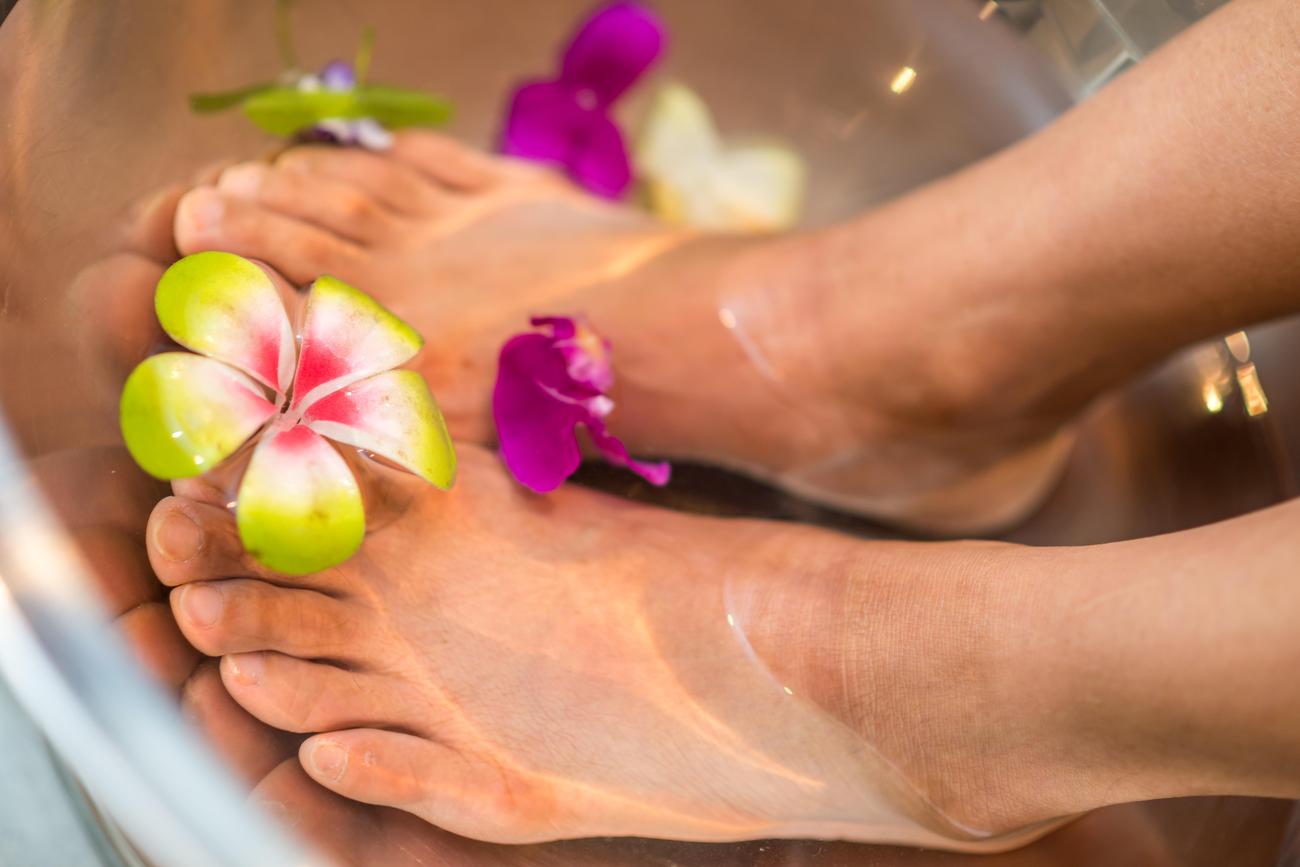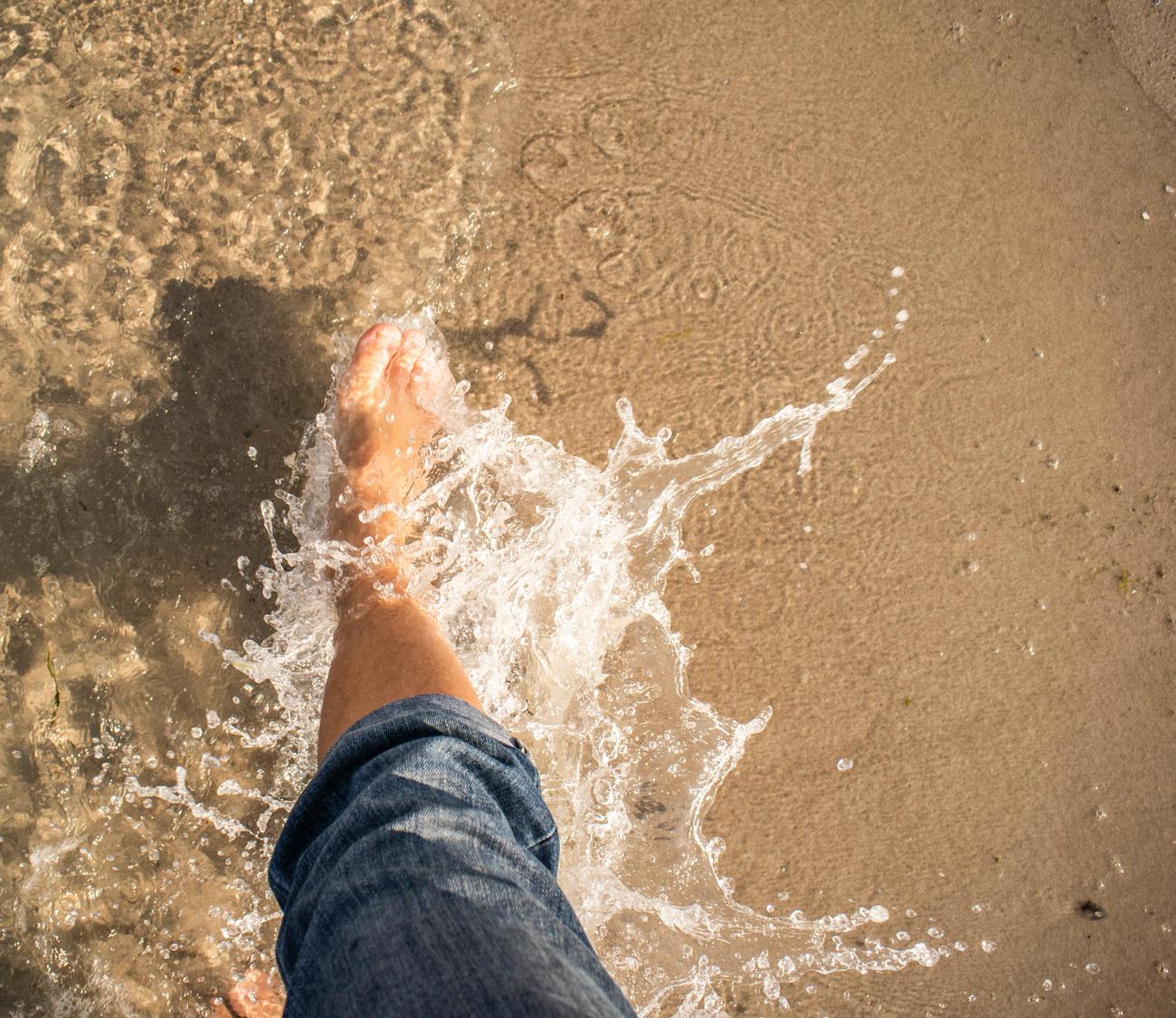If you’ve ever wondered about the fascinating world of hands and feet, look no further! In this article, we’ll delve deep into the realm of these incredible appendages, uncovering a treasure trove of fun facts that will surely leave you amazed. Prepare to be captivated by a collection of intriguing tidbits, historical references, and surprising revelations about hands and feet. Get ready to embark on a journey that will forever change the way you view these remarkable parts of the human body.

Fun Facts About Hands And Feet
Hands and feet may seem like unremarkable body parts, but they are actually fascinating and intricate. From the way our nails grow to the important role our feet play in supporting our body’s weight, there are many intriguing facts about hands and feet that you may not know. In this article, we will explore some fun and astonishing tidbits about these miraculous appendages.
1. Fingernails and Toenails
Let’s start with our nails. Have you ever wondered why our fingernails and toenails grow? It’s all thanks to the nail matrix, located at the base of the nail. This tiny but mighty structure is responsible for producing new cells that push the nail forward, causing it to grow. So, the next time you admire your long and beautifully manicured nails, remember to thank your nail matrix!
2. Balance and Stability
Moving on to our feet, did you know that our toes play a crucial role in providing balance, stability, and propulsion? As we walk or run, our toes help us maintain our equilibrium and propel us forward. They act as our body’s natural shock absorbers, minimizing the impact on our joints. So, the next time you take a step, appreciate the intricate dance your toes perform to keep you steady.
3. The Pain-Free Nail Cutting
A common question that arises when talking about nails is, does cutting them hurt? Surprisingly, the answer is no! Our nails are made up of dead cells that have hardened. As a result, cutting our nails doesn’t cause any pain. It’s like trimming dead hair strands. So, you can snip away without worrying about discomfort!
4. Unique Fingerprints
Have you ever compared your fingerprints with someone else’s? Identical twins, despite sharing the same genetic makeup, do not have identical fingerprints. This is because fingerprints are determined by random patterns of ridges and grooves that develop during fetal development. So, if you’re ever accused of a crime, your unique fingerprints can serve as evidence to prove your innocence.
5. Vulnerability to Cold
On a chilly winter day, have you noticed that your fingers, toes, and ears seem to get cold first? This is because these body parts are more susceptible to the cold due to their location, thin skin, and lack of insulation. So, if you’re feeling cold, make sure to bundle up and keep these extremities warm!
6. Pruney Hands
Have you ever wondered why your hands get all wrinkled when soaked in water for too long? Well, here’s an interesting fact: when our hands are submerged in water, the outer layer of our skin absorbs water and expands. This expansion causes the skin to wrinkle or prune up. It’s a fascinating physiological response that helps improve our grip in wet conditions, like the treads on car tires.
7. Unique Fingerprints, Again!
Returning to fingerprints, did you know that they are formed by friction ridges on our fingertips? These ridges develop during fetal development, and once formed, they remain unchanged throughout our lives. Each person’s fingerprints are entirely unique, like a personal signature. So, the next time you touch something, remember that you’re leaving behind your one-of-a-kind mark.
8. Complexity of Hands and Feet
Our hands and feet are not just simple structures. In fact, they are incredibly complex. The hand consists of 27 bones, 29 joints, and various ligaments, all working together to facilitate countless movements and tasks. Similarly, the human foot contains 26 bones and 33 joints, allowing for intricate movements that support the body’s weight. These appendages have evolved to perform an extraordinary range of functions.
In conclusion, our hands and feet are more than just ordinary body parts. They have endless stories to tell and numerous surprises to reveal. From the way our nails grow to the fine art of balancing on our toes, the world of hands and feet is truly remarkable. So, let’s appreciate these incredible appendages and their undeniable role in our lives.
“Our hands and feet may appear ordinary, but beneath their surface lies an intricate world waiting to be explored.”
Feet are fascinating body parts. Did you know that they have over 26 bones, 33 joints, and more than 100 muscles, tendons, and ligaments? If you’re interested in learning fun facts about feet, click here to discover some fascinating information about these intricate structures: fun facts about feet. From the wonders of arches to the surprising sensitivity of soles, prepare to be amazed by the incredible biomechanics and extraordinary capabilities of our beloved feet. Explore this link and unleash your curiosity!
Fun Facts About Hands And Feet
Have you ever wondered about the captivating information about hands and feet? Let us take you on an exciting journey to explore the wonders of these essential body parts. From the intricate structure of our hands to the fascinating trivia about our feet, there’s so much to discover.
Did you know that our hands have 27 bones and an amazing network of muscles and tendons that allow us to perform intricate tasks? If you’re intrigued by the mechanics of hand movements and want to learn more, click here for captivating information about hands and feet.
Now, let’s dive into some entertaining trivia about hands and feet. Did you know that the average person takes around 10,000 steps in a day? That’s a lot of walking! If you’re curious to uncover more amusing facts about our feet and the role they play in our daily lives, click here for entertaining trivia about hands and feet.
Whether you’re fascinated by the complexity of our hands or intrigued by the fun facts about our feet, there’s something for everyone. Join us in exploring the captivating information and entertaining trivia about hands and feet that will leave you amazed. Happy clicking!
Captivating Information About Hands And Feet
Entertaining Trivia About Hands And Feet
Amazing Fun Facts About the Human Skeleton
[youtube v=”gPbF-Edpx64″]
The Strength of Bones
Did you know that the bones in our body are stronger than steel? Scientists have found that bones can withstand up to 9,000 kilos of pressure, which is five times stronger than steel! The bones in our body play a crucial role in protecting our vital organs, such as the brain and heart. They provide a sturdy framework that allows us to move, support our body weight, and perform various activities. As Charles Kettering said, “Gentlemen, start your engines! Our bones are ready for action!”
Bones in Our Hands and Feet
Out of the 206 bones in an adult’s body, you might be surprised to learn that more than half of them are found in our hands and feet! Specifically, we have 52 bones in our feet and 54 in our hands. It’s fascinating to think that these relatively small body parts contain a significant number of bones. Our hands and feet perform essential tasks every day, such as grasping objects, walking, and maintaining balance. They truly deserve recognition for their intricate structures! As Leonardo da Vinci once said, “Simplicity is the ultimate sophistication, and our hands and feet are a testament to that.”
The Longest and Smallest Bones
Now, let’s talk about the longest and smallest bones in the human body. The femur, also known as the thigh bone, holds the title for being the longest bone. It connects the pelvis with the knee and provides support for our body weight. On the other hand, the smallest bone is called the stirrup, which is located in the ear. Measuring only between 2.5 and 3 millimeters, it’s no wonder it earned its tiny name. Next time you reach for the syrup, remember that even the smallest bones can have a significant impact! As William Blake famously said, “To see a world in a grain of sand, and a heaven in a wild flower, hold infinity in the palm of your hand, and eternity in an hour.”
Giraffe Necks vs. Human Necks
When the topic of neck bones arises, we usually think of giraffes. Surprisingly, both a giraffe and a human have the same number of neck bones – seven! The long and graceful neck of a giraffe is composed of seven vertebrae, just like our neck. So, the next time you feel a little envious of a giraffe’s flexibility, remember that we share the same physiological characteristic. As Ralph Waldo Emerson wisely said, “The creation of a thousand forests is in one acorn, and the potential of a flexible neck is in seven vertebrae.”
Bones in Babies vs. Adults
As we grow and develop, our bones undergo significant changes. Babies are born with approximately 300 bones, which is more than adults. Over time, some bones fuse together, resulting in the adult skeleton consisting of 206 bones. It’s truly remarkable to witness how our bodies transform from infancy to adulthood. Our bones provide the sturdy foundation that allows us to grow, explore, and make our mark on the world. As George Bernard Shaw once said, “Life isn’t about finding yourself. It’s about creating yourself, bone by bone.”
The human body and its skeletal system are undoubtedly marvels of nature. Our bones support us in every movement and protect our vital organs. They enable us to walk, run, and reach for the stars. By understanding and appreciating these fascinating facts about our skeleton, we gain a deeper appreciation for the intricate and remarkable design of our bodies.
So, let us celebrate and cherish the gift we have been given – our amazing human skeleton. As Dr. Seuss joyfully exclaimed, “Today you are You, that is truer than true. There is no one alive who is Youer than You!”
FAQ
How do fingernails grow?
Fingernails grow due to the production of cells in the nail matrix, located at the base of the nail.
Why doesn’t cutting finger nails hurt?
Cutting finger nails doesn’t hurt because the nails are composed of dead cells.
Do identical twins have the same fingerprints?
No, identical twins do not have the same fingerprints. Fingerprints are determined by random patterns of ridges and grooves.
Why do our hands and feet get cold first on a winter day?
Fingers, toes, and ears get cold first on a winter day due to their location, thin skin, and lack of insulation.
What makes our hands prune up when soaked in water?
When hands are soaked in water, the outer layer of skin absorbs water and expands, causing the hands to prune up.
Hands and Feet: Uncovering Fascinating Fun Facts
Are you ready to dive into the intriguing world of hands and feet? Get ready for a captivating journey as we uncover fascinating fun facts about these often-overlooked body parts. From their unique structure and function to their cultural significance, we will explore the wonders of hands and feet like never before. Whether you’re a curious reader or a healthcare enthusiast, this article is bound to leave you with a deeper understanding and appreciation for these amazing extremities. So, let’s embark on this adventure together and discover the incredible secrets hidden within our hands and feet!
Fun Facts About Hands and Feet
Hands and feet are remarkable anatomical structures, often overlooked but vital to our everyday lives. In this article, we will uncover some fascinating fun facts about these magnificent extremities, showcasing their unique features and shedding light on their importance. So, buckle up and prepare to be amazed by the wonders of hands and feet!
26 Bones and Counting
Did you know that there are 26 bones in each foot? That’s right! Combined, our feet make up approximately a quarter of all the bones in our bodies. These intricate structures provide support, balance, and mobility, allowing us to walk, run, and jump. But here’s a juicy tidbit: at birth, most of these foot bones are actually cartilage, and it takes around 21 years for them to completely harden. It’s a gradual transformation that helps us stride through life with confidence.
Fun Fact: Our feet house an impressive collection of bones, solidifying over time to support us on our journey through life.
Engineering Marvels
Hands and feet are the outcome of millions of years of evolution, resulting in complex engineering marvels. Each digit, joint, and ligament functions in harmony to serve its purpose. Our hands, with their 27 bones, 29 joints, and numerous ligaments, allow for incredible dexterity and precision. Meanwhile, our feet, equally intricate, provide stability and the ability to adapt to various terrains. These pentadactyl limbs, with their five digits, have evolved uniquely to meet the demands of our everyday tasks.
Fun Fact: Our hands and feet are the ultimate examples of nature’s engineering prowess, providing us with the tools to accomplish remarkable feats.
Individuality at Your Fingertips
Have you ever wondered why fingerprints are so often used for identification? Well, here’s an intriguing fact: fingerprints are as unique as our DNA! That’s right, each and every one of us possesses a distinct pattern of ridges and loops on our fingertips. Even identical twins have different fingerprints. This incredible level of diversity allows forensic experts to solve crimes and ensure accurate identification. Our fingerprints truly set us apart, revealing our individuality in the most fascinating way.
Fun Fact: Our fingerprints are like nature’s personalized signature, a testament to the uniqueness of our very being.
Incomparable Opposable Thumbs
One feature that sets our hands apart from other animals is our opposable thumbs. This thumb, with its ability to rotate and touch each finger, enables us to grasp objects with precision and manipulate our environment. From writing to creating art, from using tools to performing delicate surgeries, our opposable thumbs have played a pivotal role in our development as a species. They have granted us the power to shape the world around us in extraordinary ways.
Fun Fact: Our opposable thumbs have empowered us to become masters of our environment, unlocking endless possibilities at our fingertips.
Hidden Pasts and Extra Ribs
Did you know that our hands and feet contain over half of the bones in our bodies? It’s true! But here’s a fascinating twist: babies actually have more bones in their bodies than adults. As we grow, some bones fuse together, reducing the overall count. Additionally, a rare anomaly exists where some individuals may possess an extra rib. While this may sound intriguing, it can sometimes lead to health issues. It’s just one of the many curiosities that make our bodies endlessly captivating.
Fun Fact: Our hands and feet harbor many secrets, from the mysteries of our early development to the occasional peculiarity that makes each of us truly one-of-a-kind.
The Only Bone Without Connections
Amidst the interconnected web of bones in our bodies, there is one exception—the hyoid bone. This small U-shaped bone, situated in the neck, is the only bone that is not connected to another bone. It hangs freely, serving as an anchor for the muscles and supporting vital functions like swallowing and speech. Our bodies, filled with countless connections, reserve a special place for this solitary bone.
Fun Fact: The hyoid bone, like an independent rebel, stands alone, reminding us of the wonders and surprises our bodies hold.
A Legacy of Control and Precision
Compared to our primate relatives, we possess longer thumbs and a remarkable level of individual finger control. These traits have greatly influenced our ability to perform intricate tasks with finesse. From playing musical instruments to typing on keyboards, our hands have become essential tools of expression and productivity. They are a testament to the immense potential within each of us to shape the world around us.
Fun Fact: Our hands are not only tools but also works of art, allowing us to navigate the world with unrivaled control and precision.
In conclusion, our hands and feet are astonishing wonders of nature, intricately designed and adapted to meet our unique needs. From the bones that form their structure to the individual characteristics that set them apart, these extremities hold a wealth of fascinating fun facts. So as you go about your daily activities, take a moment to appreciate the beauty and complexity of your hands and feet. They truly are extraordinary gifts, anchoring us to the world in unimaginable ways.
[Table Placeholder]
Feet are fascinating body parts that often go unnoticed. Did you know that our feet contain a quarter of all the bones in our body? That’s just one of the many fun facts about feet that you can discover by clicking here: fun facts about feet. Explore the incredible mechanics and unique features of these incredible appendages. From the way our arches support our weight to the intricate network of muscles and tendons that enable us to move with grace, there’s so much to learn about our feet. So, why wait? Click the link and embark on a journey of discovery about your feet that will leave you amazed.
Fun Facts About Hands and Feet
Did you know that our hands and feet are not just essential body parts but also fascinating subjects of study? From intriguing facts about their anatomical structures to captivating trivia about their functions, there is so much to discover about these remarkable appendages. Whether you’re interested in learning about the intricate design of hands or the amazing capabilities of feet, we’ve got you covered. Explore these engaging pieces of information about hands and feet and prepare to be amazed! Intriguing facts about hands and feet will take you on a journey deep into the wonders of hands and feet. Are you ready to dive in?
In addition to intriguing facts, did you know that there are captivating trivia about hands and feet captivating trivia about hands and feet that will leave you astounded and marveling at their incredible abilities? Discover awe-inspiring facts about the unique fingerprints on our hands and the incredible balance maintained by our feet. These captivating tidbits will surely amaze you and make you appreciate the marvels of evolution.
If you’re still hungry for more knowledge and want to explore further, then look no further than engaging information about hands and feet. Dive deep into the intricate details of hand and foot anatomy and learn about the intricate network of bones, tendons, and muscles that allow us to grasp and walk with precision. Uncover the complex mechanics behind our hands’ dexterity and the intricate movements our feet are capable of.
So, whether you’re curious about intriguing facts, captivating trivia, or engaging information about hands and feet, make sure to click on the active internal links provided above. These resources will provide you with an insightful journey into the world of our extraordinary appendages. Prepare to be amazed by the wonders of hands and feet!
FAQ
Question 1: How many bones are there in each foot?
Answer 1: There are 26 bones in each foot, making up about a quarter of all the bones in our bodies.
Question 2: When do foot bones completely harden?
Answer 2: Foot bones are mostly cartilage at birth and only completely harden around age 21.
Question 3: What makes the human hand and foot unique?
Answer 3: The human hand and foot are triumphs of complex engineering, uniquely evolved for specific tasks.
Question 4: How many digits do hands and feet have?
Answer 4: Both hands and feet are pentadactyl limbs, meaning they have five digits.
Question 5: Are fingerprints unique to each individual?
Answer 5: Yes, fingerprints are completely unique DNA imprints that are different in every single human.
- Star Ring Trends: Etsy vs Amazon - March 28, 2025
- Boost Pollinator Habitats: Baby Blue Eyes Sustainable Farming Guide - March 28, 2025
- Protect Big Black Bears: Effective Conservation Strategies - March 28, 2025
















